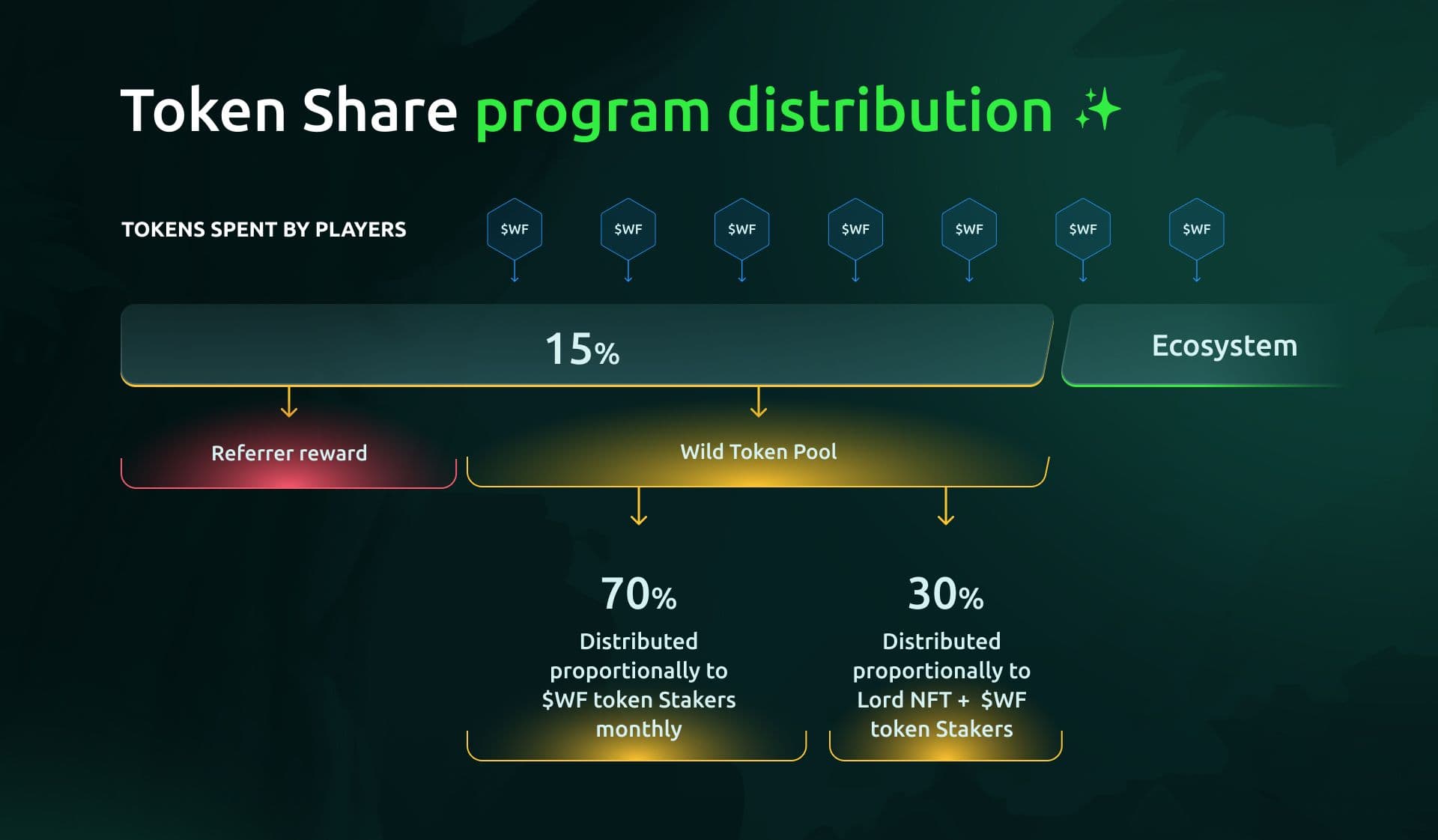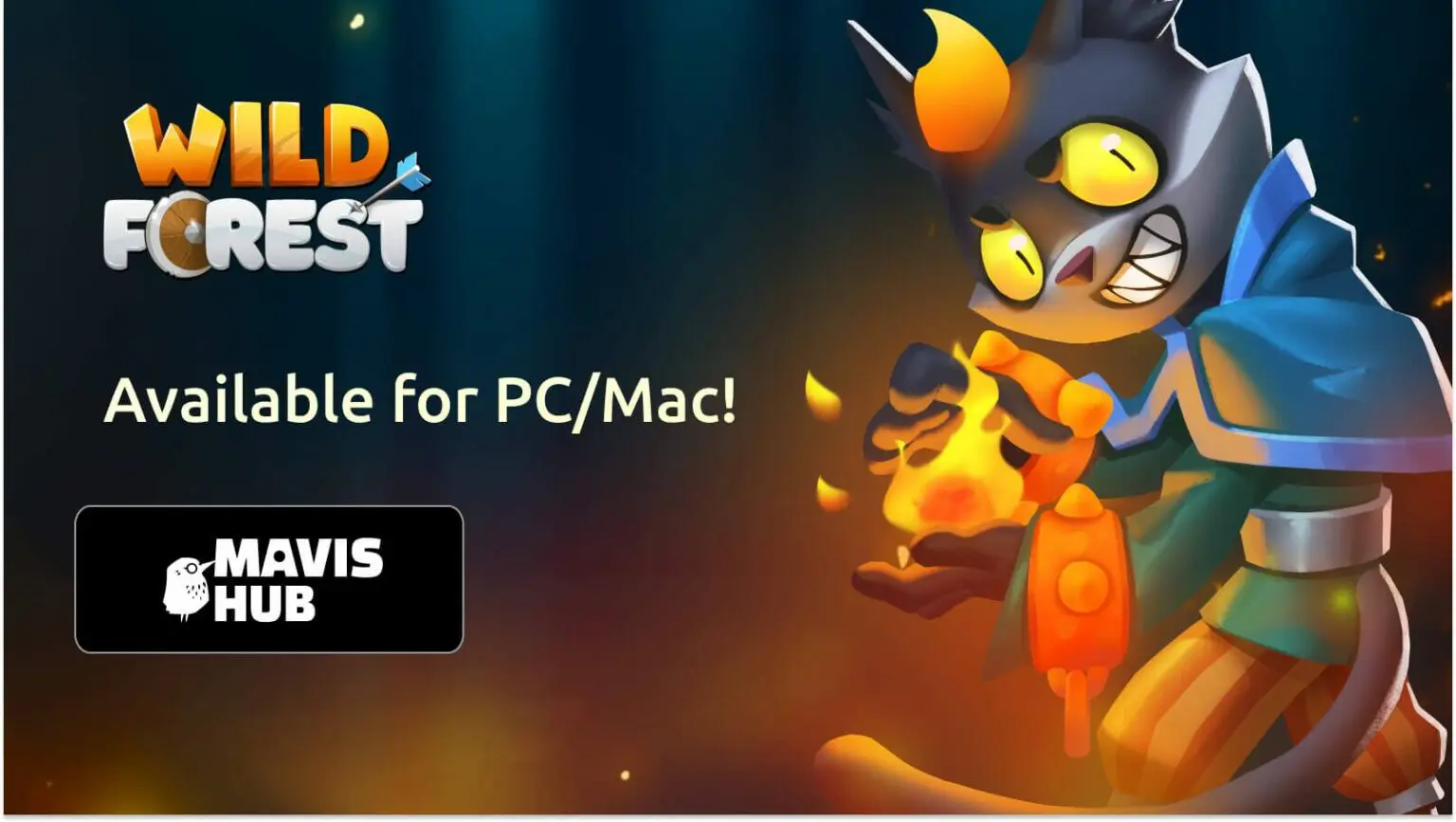Wild Forest has officially reached the one-year milestone of its $WF token economy, which launched off-chain before going live on-chain at TGE in December 2024. Over the past year, the team behind the game has prioritized creating a sustainable in-game economy that is both deflationary and utility-driven. The results, covering the period from July 2024 to July 2025, highlight significant progress in how players interact with the token and how the ecosystem is being shaped for long-term growth.
Player Spending Highlights Token Utility
In its first year, players spent more than 25 million $WF across various features and mechanics inside the game. The largest portion of this spending went into rank-up fees, followed by purchases in the in-game shop, perk rerolls, and unit minting. According to Wild Forest, these spending patterns indicate that the token is being used in ways that create real value for players while maintaining ongoing demand.
By establishing consistent sinks for tokens, the game ensures that player activity contributes directly to the strength of the overall economy. The team has positioned this as a core feature of their economic design, reinforcing the idea that utility must go hand-in-hand with sustainability.

Wild Forest Reveals One-Year Report
Rewards Keep the Ecosystem Active
While tokens were consistently spent within the game, rewards also played a major role in keeping the ecosystem dynamic. Across leaderboards, bounty systems, and other incentives, Wild Forest distributed more than 17.5 million $WF to players over the past year. Leaderboards accounted for the largest share of rewards, with additional distribution through bounty programs and incentive structures tied to buybacks and the Token Share Program.
This balance between token outflow and reward distribution has created a loop that encourages ongoing player engagement. The more players participate in competitive or community-driven activities, the more tokens are cycled back, adding layers of activity to the overall game experience.

Wild Forest Reveals One-Year Report
Deflationary Model Shows Long-Term Focus
Perhaps the most notable outcome from the first year is the clear deflationary trend within the $WF economy. After accounting for rewards and returns through the Token Share Program, more tokens were removed from circulation than reintroduced. In total, the net removal amounted to over six million $WF, which represents an annual deflation rate of just over 25 percent.
This type of deflationary setup is designed to strengthen the token’s long-term value by limiting overall supply. Wild Forest has committed to reinforcing this trend by burning every token spent during the first year. To date, 10 million tokens have already been permanently removed from circulation, with an additional 13.5 million slated for burning.
In addition, Wild Forest has introduced the Token Share Program, where deposited tokens on a gaming account (without any locks) earn players a proportional share of overall in-game spending. Holders of Lord NFTs can also receive additional rewards through staking (overall players can get up to 15% of all tokens spent in the game). Unlike many reward systems that inflate supply, these payouts do not create new tokens - they redistribute value from existing spending. Together with the burn mechanics, this creates another layer linking player activity with the token’s long-term sustainability.

Wild Forest Reveals One-Year Report
Expanding the Player Base Remains a Priority
While the past year has been about establishing the fundamentals of the economy, the focus now shifts to scaling the player community. The team has outlined several upcoming features aimed at widening the appeal of the game and onboarding more users.
A new PvE mode will introduce a single-player experience, designed to provide an easier entry point for new players before transitioning into PvP. Competitive features such as tournaments and trial decks are being developed to encourage skill-based play without requiring NFT ownership, aligning with e-sports-style competition. Scholarship tools are also in the works, making it easier for larger players and managers to support scholars within the game’s economy.
At the same time, Wild Forest is testing web2 user acquisition funnels to broaden its reach beyond the crypto-native audience. By experimenting with traditional gaming strategies, the project is aiming to attract a wider audience and integrate them into the web3 ecosystem gradually.

Wild Forest Reveals One-Year Report
Looking Ahead
The first year of the $WF economy shows how a deflationary token model can be supported by meaningful gameplay sinks and carefully balanced rewards. With more than $25 million in token spending, over $17 million in rewards distributed, and a significant burn mechanism in place, the foundation appears strong for continued growth.
As Wild Forest enters its second year, the combination of expanding game modes, e-sports-focused competition, and user acquisition strategies will play a key role in scaling both the player base and the economy. For the team, the long-term vision is clear: build a sustainable web3 game where token value is directly linked to player activity and community growth.
Frequently Asked Questions (FAQs)
What is the $WF token? $WF is the in-game token for Wild Forest, used for activities such as rank-ups, purchases, perk rerolls, and unit minting. It also serves as a reward mechanism through leaderboards and bounty systems.
How much $WF was spent in the first year? From July 2024 to July 2025, players spent 25,056,051 $WF across various in-game features and mechanics.
How are rewards distributed in Wild Forest? Players earn rewards primarily through leaderboard competitions, bounty programs, and special incentive structures. In the first year, over 17.5 million $WF was distributed.
What makes the $WF economy deflationary? The system removes more tokens from circulation than it distributes, primarily through gameplay sinks and token burns. In the first year, this resulted in a net removal of over six million tokens, translating to a 25.58 percent deflation rate.
What is planned for the future of Wild Forest? Upcoming developments include a PvE game mode, tournaments with trial decks, scholarship infrastructure, and user acquisition strategies aimed at attracting web2 gamers into the ecosystem.



